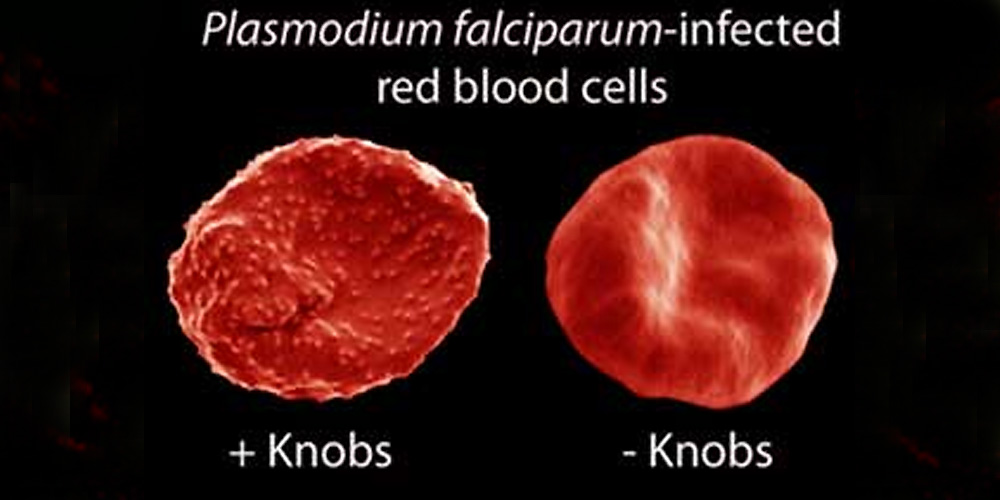Erythrocyte membrane modifications during malaria infection
Infection with the malaria parasite Plasmodium falciparum causes modifications of the erythrocyte membrane composition and rigidity. In particular protrusions of the red blood cell membrane are induced – so called knobs. These knobs are believed to provide an elevated platform and anchor point from which a major virulence factor is sticking out.
Research themes
Project status
Content navigation
About

Infection with the malaria parasite Plasmodium falciparum causes modifications of the erythrocyte membrane composition and rigidity. In particular protrusions of the red blood cell membrane are induced – so called knobs. These knobs are believed to provide an elevated platform and anchor point from which a major virulence factor is sticking out.
This virulence factor attaches to the wall of blood vessels and prevents the infected red blood cell to be flushed into the spleen, where it would be destroyed. Therefore the display of this virulence factor is essential for the survival of the malaria parasite in the human body. At the same time the adhesion of infected red blood cells causes obstructions of blood vessels, which accounts for many symptoms of a malaria infection.
We have recently identified key molecules that are important for the formation of knobs. With the aid of reverse genetics we try to understand their function and mechanism.

